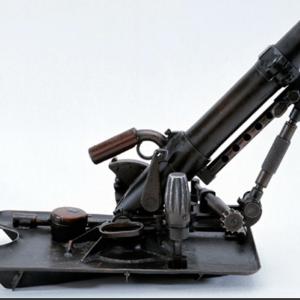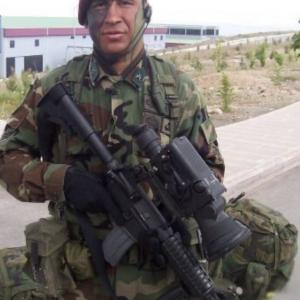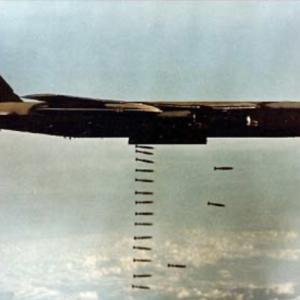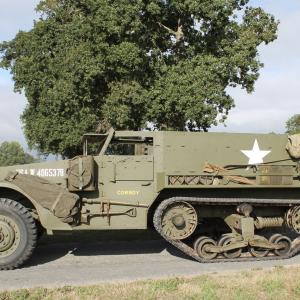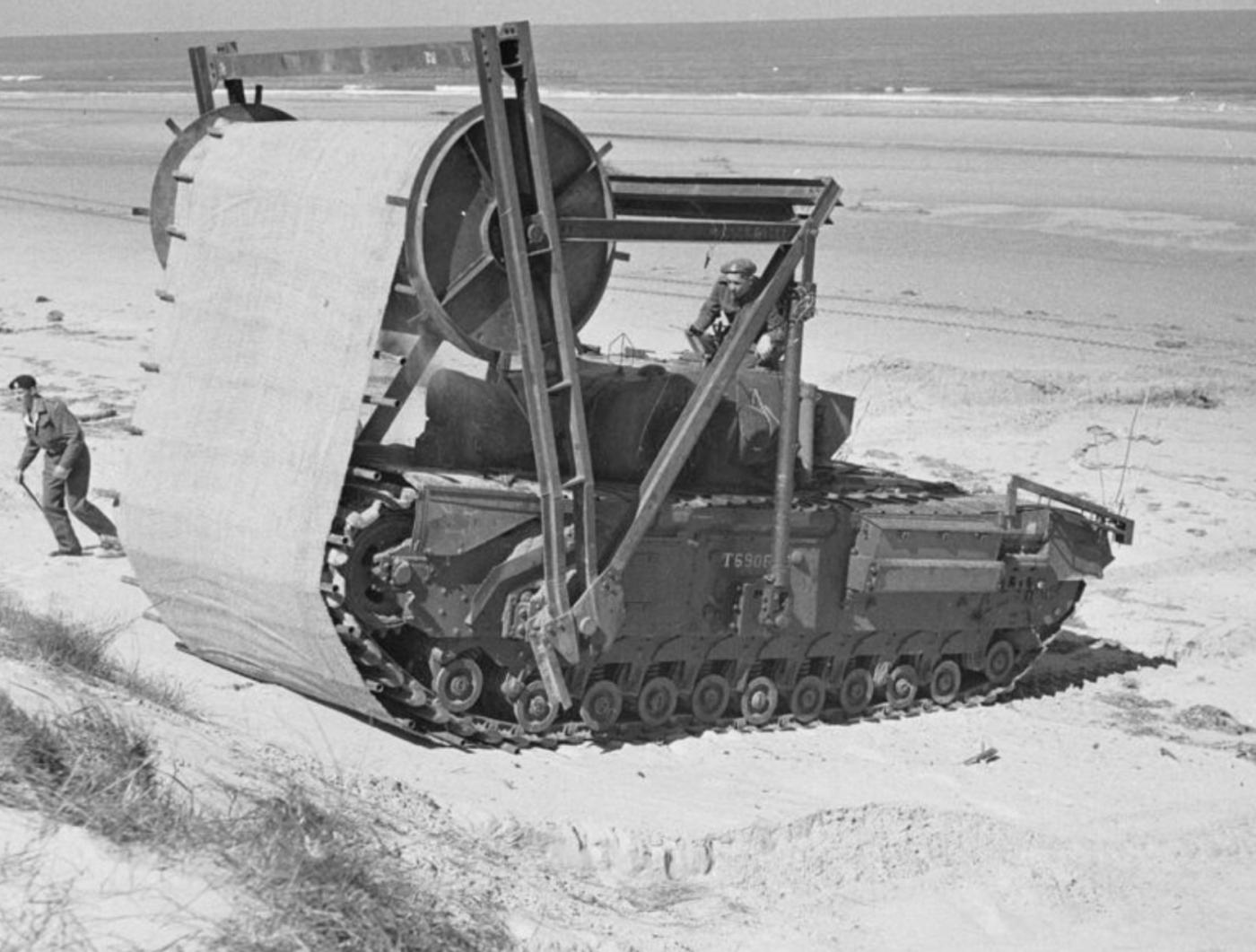
Bobbin tank
World War II was not only a showcase of military strategy and bravery but also of engineering innovation. One of the lesser-known but critical innovations was the Bobbin Carpet Layer tank, a specialized vehicle designed to support the Allied invasion of Normandy on D-Day, June 6, 1944. Developed by British forces, this unusual tank was part of a broader group of modified armored vehicles known as Hobart’s Funnies, designed to overcome specific obstacles expected during the amphibious assault on the heavily fortified Atlantic Wall. As planners prepared for Operation Overlord, it became clear that the Allies would face more than just German defenses. The beaches themselves posed significant logistical challenges. Many stretches of the Normandy coast were composed of soft sand, mud, or shingle, which could not support the weight of tanks and other heavy equipment. Conventional armored vehicles would easily bog down, stalling the invasion and leaving troops vulnerable. To address these problems, British engineer Major General Percy Hobart was tasked with developing a suite of specialized armored vehicles for the 79th Armoured Division. Among them was the Bobbin tank, a modified Churchill AVRE (Armoured Vehicle Royal Engineers) that could lay down a mat, or carpet, to create a temporary road over soft terrain. The Bobbin Carpet Layer was essentially a Churchill tank equipped with a massive cylindrical spool mounted at the front. This spool held a 30-foot-wide roll of reinforced canvas and steel mesh matting, which the tank could unroll as it advanced. The material, known as bobbin mat, was engineered to distribute the tank's weight over a wider area, preventing it and following vehicles from sinking into unstable sand or mud. The mat was designed to be durable, reinforced to support the weight of tanks, portable so it could be rolled up and transported on the tank, and quick to deploy as it unrolled automatically with the tank’s movement. To achieve this, the Churchill AVRE was heavily modified. A large drum was mounted on brackets in front of the hull, and the tank used its forward motion to turn the drum and lay the mat behind it. The process was mechanical and relatively simple, ensuring reliability under combat conditions. On Sword Beach, the easternmost landing area assigned to the British 3rd Infantry Division, the Bobbin tanks were deployed early in the assault. As the first waves of infantry secured the beachhead, the Bobbin tanks rolled forward, laying down carpet tracks that allowed additional tanks, trucks, and support vehicles to move inland without becoming stuck. While not all Bobbin tanks made it ashore or survived the initial assault, the concept proved effective. The matting created temporary roadways over otherwise impassable terrain, reducing traffic jams on the beach and allowing a more rapid buildup of forces. This helped maintain momentum during the critical first hours of the invasion. Although the Bobbin Carpet Layer did not achieve the fame of other military innovations, its contribution to the success of D-Day was significant. It exemplified the kind of practical engineering that turned what could have been a logistical nightmare into a manageable operation. The Bobbin tank was one of many examples where ingenuity and adaptation helped overcome the natural and manmade challenges of the battlefield. The Bobbin is also remembered as a testament to the collaboration between engineers and military strategists during World War II. It highlighted how addressing infrastructure and terrain obstacles could be as vital to victory as firepower or troop strength. The Bobbin Carpet Layer tank played a small but crucial role in the success of the Normandy landings. As part of Hobart’s Funnies, it represented a key shift in military thinking where technology and battlefield engineering were integrated directly into the combat plan. Without such innovations, the success of D-Day and the subsequent liberation of Western Europe might have faced even greater challenges. Today, the Bobbin tank stands as a symbol of the quiet but essential support roles that shaped the outcome of one of history’s most pivotal battles.

